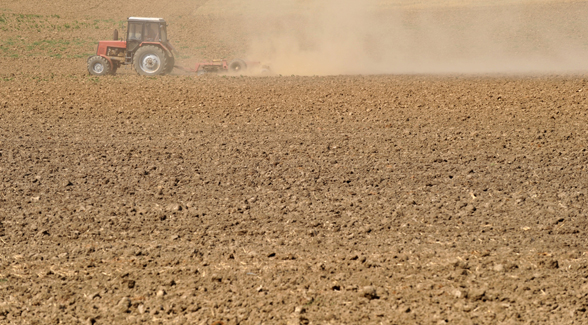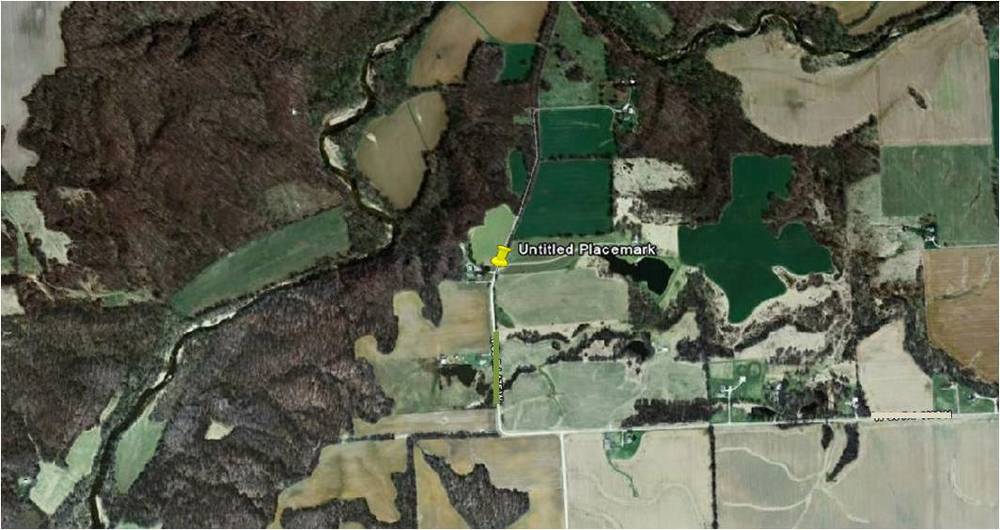
The beauty of not having land in the family and essentially starting with a blank slate is that we can pretty much choose any location to start our farm. However, it is a blessing and a curse. Figuring out where to farm has been, and continues to be, the most difficult decision to make. Sometimes I wish the choice was already made for us and we had no other option but to make it work. Since that’s not the case, we spend an inordinate amount of time debating the pros and cons of weather, land prices, water access, distance from family, proximity to end markets, and so on. We’ve done a fair amount of research on each topic, so I’ll throw out a few bits and pieces of our decision-making process... and if anyone has feedback we’d love to hear it!
The first step for us was to eliminate places we definitely would not want to farm. We actually thought about several foreign countries, but eventually ruled them out and chose to stick it out in the good ole US of A (despite the seemingly insane regulatory environment). For us, deciding to stay in the US was primarily based on the desire to at least be in the same country as our family. Language barriers, our love for the USA and other factors played a role, but family was the most important.
Next we were able to eliminate several regions within the US. Firstly, we love the sun, the stars and the moon. Yes, I know that living in NYC we’re surrounded by skyscrapers and so much light pollution that neither the sun nor the stars/moon are typically visible, but we moved here for jobs, not the view. I can hardly contain myself when I think of living somewhere where I can see the sunset and the sky at night. Secondly, and along those same lines, we’re not huge fans of overcast days and long, hard winters. That pretty much eliminated the Northeast, Northwest and a lot in between. Seems simple, but this part took months! The end result was basically bisecting the US map horizontally. If you look at a state map you can roughly follow a line across the top of Arizona, over Oklahoma and Arkansas, all the way to North Carolina and the Atlantic Ocean. We’d love to be south of that line or within a couple hundred miles north.
Within those states of choice we originally thought the Southwest region would be perfect. It’s near at least one of our families and it’s a beautiful place to live.
So, we spent a few weeks researching the Southwest and found that there are some very serious water issues facing the entire region. Given that our goal is to establish a farm that will persist for generations, we had to take this into serious consideration. Some of our contemplated farm enterprises (dairy/cheese, and grassfed beef) can be highly water intensive. Cows in the Southwest have been known to consume up to 30 gallons of water per day! Plus, if you want to maintain a decent acres/cow ratio you’ll likely need around three acre-feet of water per year on the pasture. Rain ain’t gonna cut it and that means you need alternative access to water.
The first step for us was to eliminate places we definitely would not want to farm. We actually thought about several foreign countries, but eventually ruled them out and chose to stick it out in the good ole US of A (despite the seemingly insane regulatory environment). For us, deciding to stay in the US was primarily based on the desire to at least be in the same country as our family. Language barriers, our love for the USA and other factors played a role, but family was the most important.
Next we were able to eliminate several regions within the US. Firstly, we love the sun, the stars and the moon. Yes, I know that living in NYC we’re surrounded by skyscrapers and so much light pollution that neither the sun nor the stars/moon are typically visible, but we moved here for jobs, not the view. I can hardly contain myself when I think of living somewhere where I can see the sunset and the sky at night. Secondly, and along those same lines, we’re not huge fans of overcast days and long, hard winters. That pretty much eliminated the Northeast, Northwest and a lot in between. Seems simple, but this part took months! The end result was basically bisecting the US map horizontally. If you look at a state map you can roughly follow a line across the top of Arizona, over Oklahoma and Arkansas, all the way to North Carolina and the Atlantic Ocean. We’d love to be south of that line or within a couple hundred miles north.
Within those states of choice we originally thought the Southwest region would be perfect. It’s near at least one of our families and it’s a beautiful place to live.
So, we spent a few weeks researching the Southwest and found that there are some very serious water issues facing the entire region. Given that our goal is to establish a farm that will persist for generations, we had to take this into serious consideration. Some of our contemplated farm enterprises (dairy/cheese, and grassfed beef) can be highly water intensive. Cows in the Southwest have been known to consume up to 30 gallons of water per day! Plus, if you want to maintain a decent acres/cow ratio you’ll likely need around three acre-feet of water per year on the pasture. Rain ain’t gonna cut it and that means you need alternative access to water.
The Southwest in general depends heavily on water from the Colorado River Basin. Seven states in the Southwest pull water from the Colorado River Basin (Arizona, California, Colorado, Nevada, New Mexico, Utah, and Wyoming). Cities such as Las Vegas, Phoenix, Albuquerque, Denver, Los Angeles, Salt Lake City, San Diego and many others are the biggest users. In addition to US states, two states in Mexico also have water rights. Needless to say, the situation is getting pretty hairy with the decades long drought that is potentially underway right now. In fact, the US Department of Interior conducted a study predicting a high likelihood of “conflict” over water in the Southwest region by 2025.
 Read more at The Land Report
Read more at The Land Report
Given the scarcity of water, many states in the Southwest have what’s called a “First in time, First in right” rule. Water is considered private property and is sold separate from the land (yes, even rain water) and if you don’t have the oldest water rights in the area then it’s possible you may not have access to any water in a given year. Securing dependable water rights can be very difficult and expensive; we had one quote for about $25k per acre-foot! If you don't want to buy all that water then you can conceivably dryland graze on hundreds or thousands of acres, but we have neither the budget nor the desire for that type of ranching.
Taking our new found consideration for water into account, we decided to stick to areas with heavier rainfall and more dependable water sources. This created another neat line down the middle of the US map that effectively quartered us off into the Southeastern/Midwestern states. We're just starting our research into farming in those states, so we'll be sure to provide updates as we move along!



